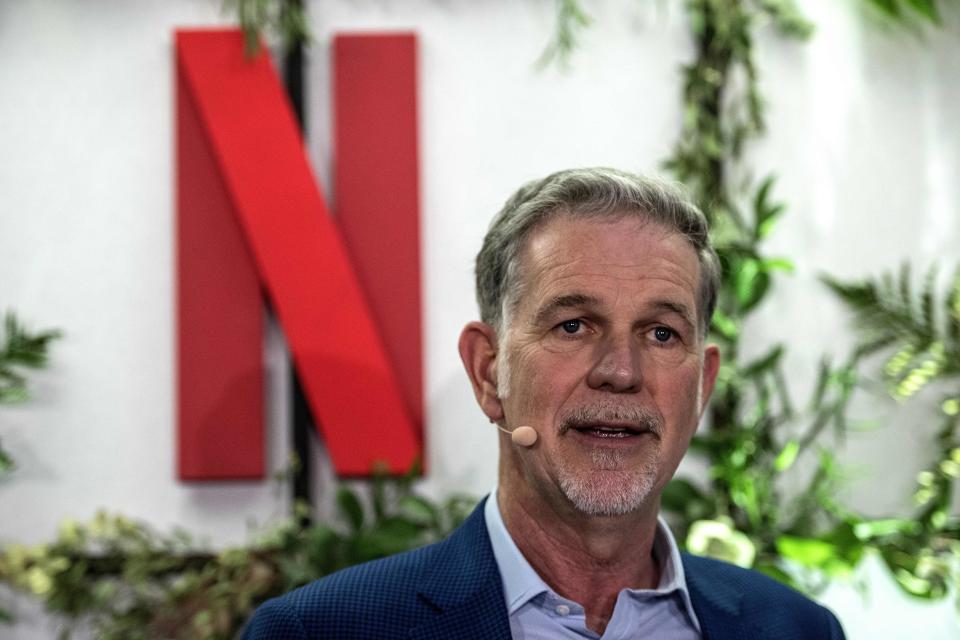Netflix's Q3 demonstrates the dreaded 'pandemic pull-forward in demand'
Netflix’s Q3 2020 earnings report on Tuesday beat expectations on revenue ($6.44 billion vs. $6.39 billion expected) and missed on earnings per share ($1.74 vs. $2.13 expected), but Wall Street typically cares about just one number in Netflix earnings: new subscriber additions.
Netflix (NFLX) added only 2.2 million new paid subscribers in the third quarter (analysts had hoped for 3.3 million, and Netflix’s own prior projection was for 2.5 million), so the stock tumbled 6% after hours and continued to fall on Wednesday.
In its earning press release, Netflix was direct about the subscriber miss: “As we expected, growth has slowed... We think this is primarily due to our record first half results and the pull-forward effect we described in our April and July letters.”
The idea of a “pull forward in demand” has come up time and again during the COVID-19 pandemic, used by analysts in reference to a number of companies that saw a boost in the early months of stay-at-home orders.
Trend vs. spike
When Peloton (PTON) saw a surge in sales of its bikes at the start of the pandemic, and its stock responded in kind, some analysts warned it was a pull-forward in demand, and would thus be short-lived, creating sales numbers that could not continue.
But by August, when Goldman Sachs analysts raised their price target on the stock, they wrote that Peloton’s sales surge “isn't simply pull forward, but rather an acceleration and steepening of the adoption curve as network effects are amplified, marketing spend is repurposed, and the fundamental fitness landscape is altered.”
In other words: a new trend, vs. a temporary spike. Peloton confirmed that when it smashed expectations with its Q4 earnings in September, reporting huge equipment sales even after U.S. gym chains reopened.
Analysts are warning of a pull-forward for Restoration Hardware (RH), too. That stock is up 200% during the pandemic (since March 15), as shoppers have bought new home furnishings to spruce up their home work space. (Wayfair and Target have seen huge gains for the same reason.)
Jefferies, in a note this week, initiated coverage of RH with an Underperfom rating, and warned that the “pull-forward of e-commerce adoption for furniture & home furnishings purchases stemming from COVID-fueled shifts in consumer behavior could also unfavorably impact” RH’s physical galleries, since the pandemic has prompted a dramatic acceleration of digital vs. physical shopping. It remains to be seen, post-pandemic, whether that concern will prove warranted about RH.
In Netflix’s case, the phenomenon is real.

Pandemic bump
In the first half of 2020, Netflix added 28.1 million new paid subscribers, more than the 27.8 million it added in all of 2019. That is a clear and obvious pandemic bump, but now Netflix stock is being punished by the spike because it raised expectations, and stock movement after earnings reports is all about expectations.
Netflix expects the pull-forward effect to continue to weigh on its subscriber adds in Q4 and well into 2021. It now projects 6 million new subscribers in Q4, compared to analyst expectations of 6.5 million.
“The state of the pandemic and its impact continues to make projections very uncertain, but as the world hopefully recovers in 2021, we would expect that our growth will revert back to levels similar to pre-COVID,” Netflix said. “In turn, we expect paid net adds are likely to be down year over year in the first half of 2021 as compared to the big spike in paid net adds we experienced in the first half of 2020.”
None of that means there’s compelling cause for concern about Netflix’s success in the near future. In fact, Netflix reported strong free cash flow of $2 billion for the year, whereas it previously warned of negative free cash flow due to the pandemic. (The stock movement has ignored that, focusing on the subscriber miss.)
“As we look forward, we think expectations are too high for 2021,” says Rosenblatt analyst Bernie McTernan. “We’re about 5% to 10% below the Street on 2021 [subscriber] adds... The first half [of 2020] was a banner six months, and then the second half, you’re really dealing with that pull-forward, and we think they’ll be dealing with it next year too.... We just think we’re further along in the growth curve here, and that penetration is already high and that we could be at saturation levels.”
Netflix only added 177,000 new subscribers in the U.S. in Q3, but its biggest gains came from the Asia-Pacific region. If Netflix is approaching U.S. saturation, that simply means a huge number of Americans are paying for it. And the bull case is that Netflix could raise the price without losing those people.
“If you’re bullish on the stock, you’re thinking the subscriber guide is conservative,” McTernan says, “and then also you focus on the price increase and the thinking that Netflix has unlimited pricing power.”

Yes, Netflix faces more competition than ever, and Disney (DIS) in particular is breathing down Netflix’s neck. (Disney last week announced a corporate reorganization to focus more resources on its streaming platforms; Wall Street applauded.)
But to put things in perspective: Netflix is now at 195 million global paid subscribers and will surpass 200 million before the end of 2020; Amazon Prime has 150 million subscribers, but it’s been reported that fewer than half use Prime Video; Disney just hit 100 million subscribers total across its three streaming platforms, Disney+, Hulu, and ESPN+. Netflix had a big head start in original content streaming, and still enjoys that lead, even as subscriber gains are slowing.
—
Daniel Roberts is an editor-at-large at Yahoo Finance and closely covers the streaming wars. Follow him on Twitter at @readDanwrite.
Read more:
Disney's streaming re-org is not just about Disney+
Quibi cannot blame all of its many problems on coronavirus
Disney, WB are sending a clear signal: Americans aren't ready to return to movie theaters
‘Hamilton’ delivers 64% download bump for Disney+
Disney's 'Mulan' will look to Christopher Nolan's 'Tenet' for a movie theater health check
Coronavirus is forcing Quibi, NBC Peacock to change their plans at launch
Movie theaters seek bailout as coronavirus devastates business

 Yahoo Finance
Yahoo Finance 
